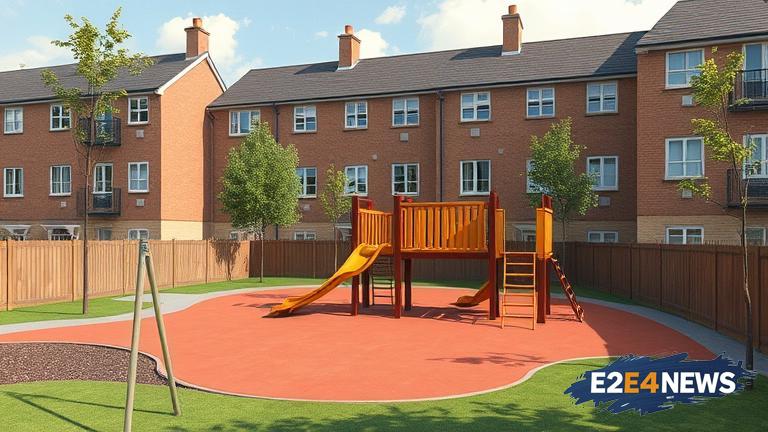A recent investigation has revealed that many new housing projects in England are being built without play areas, sparking concerns over the wellbeing of children living in these developments. The lack of play areas is attributed to the increasing pressure on developers to build more homes, with many prioritizing profit over the needs of residents. This trend is particularly worrying, as play areas are essential for children’s physical and mental development. Without access to safe and accessible play spaces, children may be forced to play in streets or other unsuitable areas, putting them at risk of injury or harm. Furthermore, the absence of play areas can also have a negative impact on children’s social skills, as they are denied the opportunity to interact with their peers in a safe and supervised environment. The issue is not limited to a specific region, with housing projects across England being built without play areas. In some cases, developers are including small, tokenistic play areas that are inadequate for the number of children living in the development. The problem is exacerbated by the fact that many local authorities are failing to enforce planning regulations that require developers to include play areas in new housing projects. This lack of enforcement is allowing developers to prioritize profit over the needs of residents, with devastating consequences for children’s wellbeing. The government has been criticized for its handling of the issue, with many arguing that it is not doing enough to ensure that new housing projects include adequate play areas. In response to the criticism, the government has announced plans to review planning regulations and ensure that developers are held to account for their failure to include play areas in new housing projects. However, many are skeptical about the government’s commitment to addressing the issue, citing a lack of concrete action and a failure to provide adequate funding to support the development of play areas. The issue is not just a matter of concern for parents and children, but also for the wider community. Play areas are essential for building strong, cohesive communities, and their absence can have a negative impact on social cohesion and community spirit. In addition, the lack of play areas can also have a negative impact on the environment, as children are forced to play in streets or other areas that are not designed for play. This can lead to increased traffic congestion, noise pollution, and other environmental problems. The solution to the problem is not simple, but it requires a concerted effort from government, developers, and local authorities to prioritize the needs of children and ensure that new housing projects include adequate play areas. This can be achieved through a combination of policy changes, increased funding, and stricter enforcement of planning regulations. Ultimately, the inclusion of play areas in new housing projects is essential for ensuring that children have access to safe and accessible play spaces, and for building strong, cohesive communities. The issue is a complex one, and it requires a nuanced and multifaceted approach to address the root causes of the problem. By working together, it is possible to create housing developments that prioritize the needs of children and provide them with the play areas they need to thrive. The benefits of including play areas in new housing projects are numerous, and they extend far beyond the immediate needs of children. Play areas can help to reduce crime, improve mental health, and increase social cohesion, making them an essential component of any housing development. In conclusion, the lack of play areas in new housing projects in England is a serious concern that requires immediate attention. It is essential that government, developers, and local authorities work together to prioritize the needs of children and ensure that new housing projects include adequate play areas. By doing so, we can create housing developments that are safe, sustainable, and supportive of children’s wellbeing, and that provide them with the opportunities they need to thrive.
